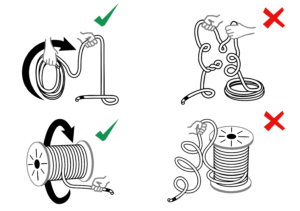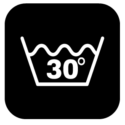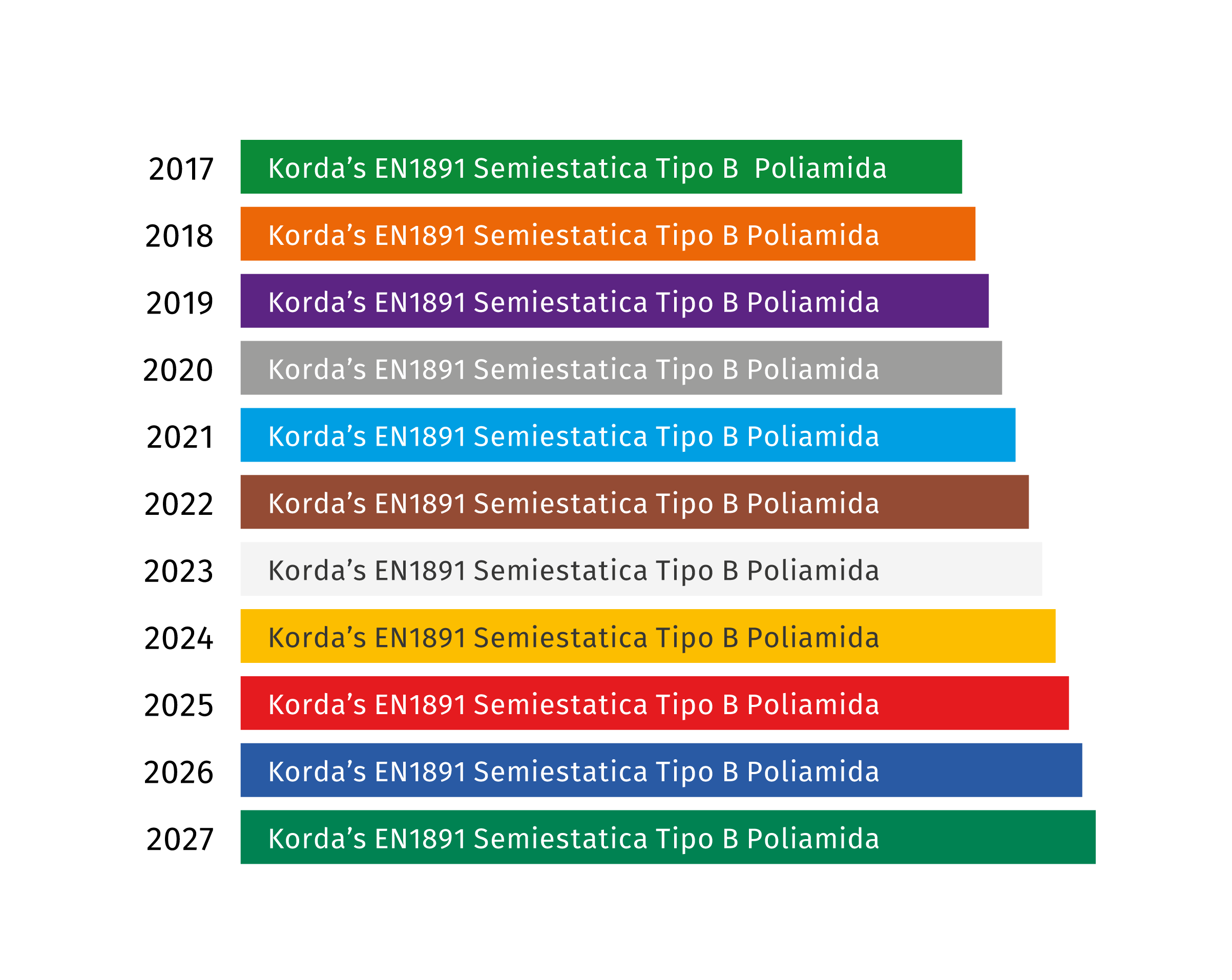Ropes are manufactured un way they are neutral, but when retired from the reel or the twist we must manipulate them carefully in order to avoid twists. To get a proper neutral rope ready to use follow the procedure shown in the image.
 Twists are mainly caused by the descenders and the rappeling techniques.The speleology devices make the rope follow a pulley path in the same two-dimensions edge.
Twists are mainly caused by the descenders and the rappeling techniques.The speleology devices make the rope follow a pulley path in the same two-dimensions edge.
When the rope path is three-dimensional (as the figure 8 belay device or a dynamic knot) then the rope twists.
It is advised to fully stretch the ropes from time to time in order to keep the rope in a neutral shape.


 HAND WASH
HAND WASH MACHINE WASH
MACHINE WASH DRYING
DRYING
